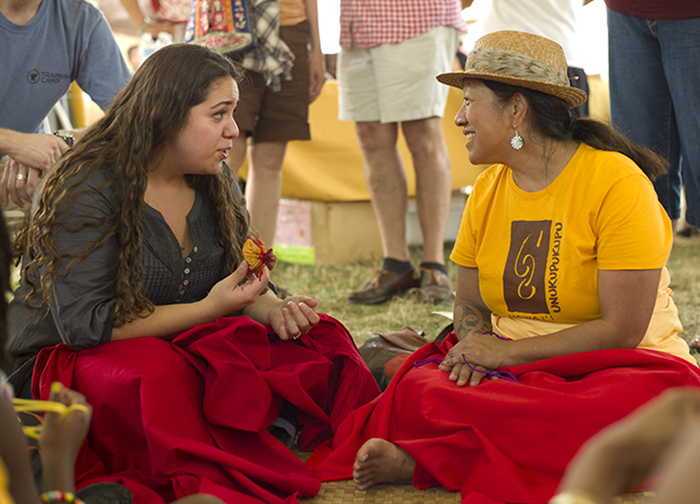“Talk story” is an expression from Hawai’i that can be used as a noun or a verb, meaning “an informal chat” or “to chat informally.” The Smithsonian Center for Folklife and Cultural Heritage’s new online publication, Talk Story: Culture in Motion, is an expansive conversation that embraces the willingness to speak honestly and informally with those who know our work. Like the Center’s former print newsletter of the same name, Talk Story will provide regular updates about the work of our staff and at the same time delve into deeper matters. It is part of a larger effort to make our work more transparent to the public and illuminate cultural traditions by sharing the stories that make them meaningful.
We encounter remarkable people almost every day, and we want you to know some of them too.
These are exciting days at the Center. The Smithsonian Folklife Festival just presented unforgettable programs on China and Kenya, hosting more than 250 musicians, artists, and tradition bearers. The Center also signed a new memorandum of understanding with the National Park Service that will keep the Festival on the National Mall for another five years. Smithsonian Folkways Recordings continues to produce award-winning albums, most recently earning three well-deserved Independent Music Awards. Last year, the Center’s staff of forty-two reached more than ten million people with great music and videos, inspiring blogs, and social media posts through all of our digital channels. One wonderful example is this video about the spirit of the Festival created by intern Albert Tong. It offers a glimpse of the musicians, artists, and artisans who are at the heart of our work.
Talk Story tells who we are, where we came from, and where we are going.
As we finalize a strategic plan that will guide the Center for the next five years, we seek inspiration from the people who built this fine organization—and from the principles and values that guided them. By sharing the work of the Center’s talented staff and partners in the areas of research, education, collections, and cultural heritage policy, Talk Story gives us the opportunity to connect past, present, and future.
What do tradition, creativity, community, folk, and art-making mean in the early twenty-first century? What do we mean when we speak of cultural democracy? Intercultural dialogue? In each issue our goal is to pose challenging questions in order to share the diverse perspectives of the people who make up the Center and collaborate with us. It is this diversity of perspectives that brings vitality to our work and gives vibrancy to Talk Story.
Michael Atwood Mason enjoys the fruits of Spanish viticulture, the ideas of Afro-Cuban philosophy, and the challenges of managing the Smithsonian Center for Folklife and Cultural Heritage.


